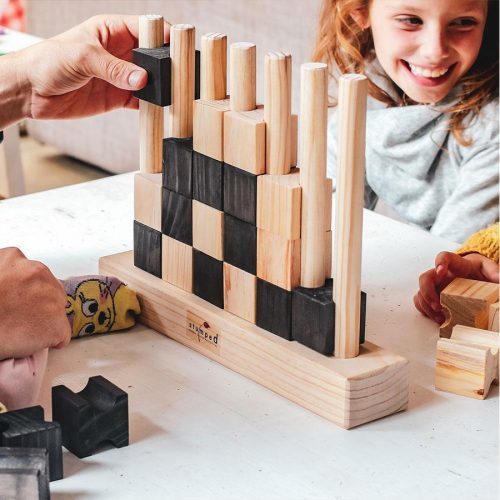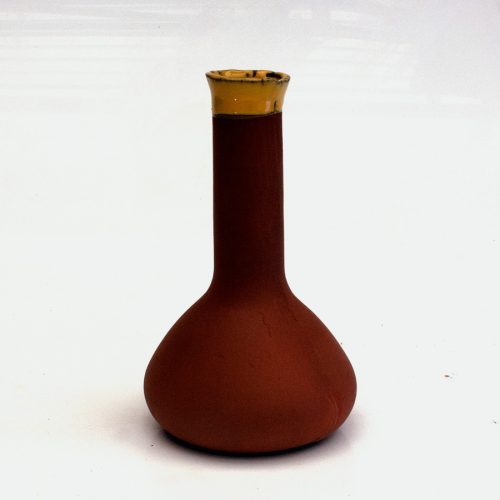Ollas (pronounced ‘oh-yah’) are terracotta clay vessels used for irrigation.
Kleipots Olla – Natural Clay Watering System – Small fat – 100 ml
R114.00
Out of stock
Out of stock
Description
Ollas (pronounced ‘oh-yah’) are terracotta clay vessels used for irrigation. This ancient watering system has been used by agrarian peoples for centuries. The pots are buried in the soil with the neck sticking out. Because the clay is unglazed, water can gradually seep out allowing plants to absorb as much moisture as they need. The system is exceptionally water efficient as it diffuses water as the plants need it. It will also water plants for several days, so you can leave home for several days with confidence that the ollas will care for your plants.
- Olla size: 120mm (h) x 500mm (d) – holds 100ml
- This sized olla is best used with a +/-15cm plant pot
- These ollas do not come with lids. Small stones or champagne bottle sized corks can be used to seal the top if desired.
Why use ollas in your garden?
- Because an olla dispenses water directly to the roots, there is no wastage, and minimal evaporation from the opening of the jug peeping through the surface of the soil.
- Ollas prevent overwatering – a common problem with veggie gardening and pot plants.
- Ollas are waterwise. You’ll be contributing to saving this precious resource. The olla diffuses water into the soil as and when the plant needs it.
- An olla waters when you can’t. Fill all your ollas before going away for a few days. Your plants’ watering needs are taken care of!
- Because ollas supply moisture underground near the root system, it discourages weeds from propagating on the surface, which remains relatively dry.
- Ollas help to keep the soil aerated. It prevents the soil from compacting, which occurs with conventional watering methods.
- An olla can be used as a booster when establishing new saplings or shrubs: bury an olla near the sapling until it is nicely settled. You can then retrieve the olla and use it elsewhere in your garden.
How to use your olla
- Simply bury the olla in the soil with the yellow neck sticking out and fill it with water. The water will slowly seep through the porous clay into the soil and stimulate root growth.
- Cover the neck with a flat stone, shard or champagne cork to discourage insects or soil from getting in. Covering the neck also helps to minimise evaporation in hot weather.
- Check and top up your ollas regularly, usually every few days. Do not wait until they are empty; the idea is to keep the soil moist without saturating it. In hot weather the ollas can run dry very quickly.
- The time it takes for the water to dissipate depends on soil type, plant species and weather conditions. It is advisable to establish this before leaving the plants unattended for a prolonged time.
- Add plant food directly to the soil, not into the ollas.
The origins of the olla
- The word “olla” was derived from the Latin “aula” or “aulla” and refers to a rounded clay pot that was used for a variety of purposes including subterranean irrigation.
- Ollas have been used for irrigation all over the world for centuries; they are found in all shapes and sizes in the more arid regions of North Africa, the Levant, Asia and the Americas. It is believed this practice dates back more than 4 000 years. The oldest known written instruction on the use of buried, unglazed clay vessels for irrigation was in the “Fan Shengzhi shu”, a Chinese agricultural guide from the Han dynasty (202 BC – 220 AD).
- I have been using ollas for many years.
- Since lockdown I have been a busy bee in my garden and had this idea to design and make my very own. Ollas are suitable for medium/large pots or can be buried directly in the garden or containers. They are practical, affordable and very effective.
Brand
Kleipots
In her late teens she took my first pottery class and soon realised it was all about giving life to a simple lump of mud. From then, she was hooked. Ever since, she has worked with and learnt her craft from a host of wonderfully talented potters in and around Cape Town, who constantly inspire her.
In recent years she started teaching small groups a few nights a week. She loves the interaction and creativity. It is always a thrill and a marvel to unpack a kiln after a firing. Pottery is a wonderful journey. Amelia believes that when one has a ball of clay in one’s hand, one loses their inhibitions and lets out their inner person.
You must be logged in to post a review.










Reviews
There are no reviews yet.